Editor’s Note: This article, which originally ran in Western Tanager Newsletter, is reprinted with the permission of the Los Angeles Audubon Society. It is the second in a series of three articles on birding in the U.S. Virgin Islands by Robbie Lisa Freeman, who came here recently to learn about the birds on St. Croix, St. John, and St. Thomas, and the ecosystems that nurture them. Part 1 was published in October.
It’s only 8 a.m. at Francis Bay in St. John, but a small bead of sweat is already doing a slow roll down my right temple as I fire off shots of the Crested Anole. My subject is performing an impressive display of territorial dominance. It stands statuesque, inflating a large and spectacular rainbow-colored chin. Add to that a sudden and repetitive up and down motion, as if it’s doing pushups, and you know this is a creature to be reckoned with ….
But enough! Though the fellow has put on a mesmerizing exhibition, this leathery little guy is a lizard! He is not the Northern Parula I have come so far to photograph.
We’d arrived at sunrise, hoping to catch the elusive parula breakfasting on insects. But now, three hours into our stakeout, I’m concerned our warbler has flown the coop. Truth is, we’d been told there was little chance to see this lifer. These tiny yellow and blue-grey warblers were typically long gone from the island by mid-April, winging their way to breeding grounds as far north as the boreal forests of Canada or any forest in between that hosts trees draped in Spanish moss or lichen, used for nesting.
Yet, we had good reason to be hopeful. The previous day, on a tip from a local birder, we had driven to Francis Bay in search of the parula. After scouring the treetops along the 0.7-mile boardwalk surrounding the salt pond, we had come to the end of the trail – literally. The boardwalk had ended beachfront, where we’d taken advantage of a well-placed picnic table to sit in the shade and ruminate over missing the bird. But while chatting, we’d heard chip-chipping sounds of a bird on the prowl. Then my husband, Randy, had seen a flash of feathers in the tree across from us.
“There’s something there,” he’d said, pointing to the middle of the tree. Binoculars up, we’d combed the branches.
“That’s not something,” I’d exclaimed. “That’s the Northern Parula!” In my excitement, I’d fumbled the camera, not stopping to check my ISO or other settings. The bird had darted in and out of the shadows, mocking my attempts to capture him. And though he’d definitely made our day – yippee, another lifer – we hadn’t captured a single good shot. Thus, our second stakeout.
As the sun climbs higher, I feel hope fading. I kick at the sand, silently kicking myself too. Photography lessons are definitely on order.
“Shall we call it?” Randy asks.
“A few more minutes,” I respond for perhaps the 10th time. He is patient. A good quality in a birder. I continue to search the tree. This bird will come to this tree, I steadfastly affirm.
Northern Parulas typically flit and hop primarily through the upper levels of the forest and subcanopy, but during migration to islands like St. John, they’ll forage lower in the understory, darting around the tips of branches plucking off tasty insects. Lucky for us, this tree is small, and the bird we had seen before stayed just above eye level.
More minutes tick by, and I’m ready to give up. Then, in the distance, I hear him calling. We hold our breaths as we suddenly see the bird streak through the air down to our tree. He lurks in the interior, hiding behind leaves and branches, gathering breakfast. He flashes his gorgeous yellow and blue-grey feathers at us over and over. We’re both shooting, but the little devil is always behind a leaf or branch. It’s like he’s playing cat and mouse with us!
My camera is getting heavier by the moment as I try to follow the bird. Why can’t he just… sit… still….! I finally bring the camera down, frustrated by the folly. But then, I catch him creeping toward the top of a branch and voilà – he’s in view! I rattle off a dozen shots and then he’s gone. We grin. The little guy made our morning. And now, we’re off to find more lifers on this island paradise.
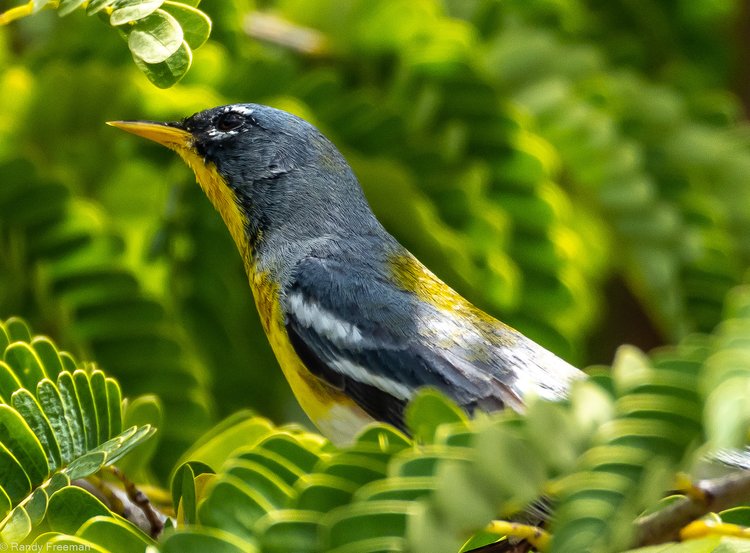
St. John straddles the Caribbean Sea on one side and the Atlantic Ocean on the other. Of the three major U.S. Virgin Islands, St. John is unique because more than half of it is protected national parkland. Landlubbers can revel in the island’s 7,000+ acres of hiking trails, beaches, and tropical forests. Salty dogs can swim, snorkel, or dive amid aquatic treasures in Coral Reef National Monument, an 18,000-acre underwater preserve that boasts brain corals, sea stars, and tropical fish. And birders like me can enjoy chasing the 150-plus species of migrating and resident birds, ranging from American Redstarts to Bridled Quail Doves and Mangrove Cuckoos.
As we explore the island’s 19.6 square miles, I’m eager to spy lifer number 2 — the Smooth-billed Ani. This jet-black member of the cuckoo family may not be striking in plumage, but he has his own charms, including a Jimmy Durante-styled beak that’s almost bigger than his face. Driving along Centerline Road, through the higher elevations of the island, I keep my eyes to the tree line while Randy pilots our unassuming Yaris rental car. Ahead in the trees I see a flock of black birds and yell “Pull over!” I leap out of the barely stopped Yaris with camera in hand and move slowly along the roadside toward the trees. But the flock is wary. Before I can get close enough to click off some shots, the “black witch” of St. John has streaked away, leaving me in a wake of squeaky “ahh-neee” whistling caws. Over the next few days, the mercurial anis would tease us with glimpses, but would never let us get within photo range.
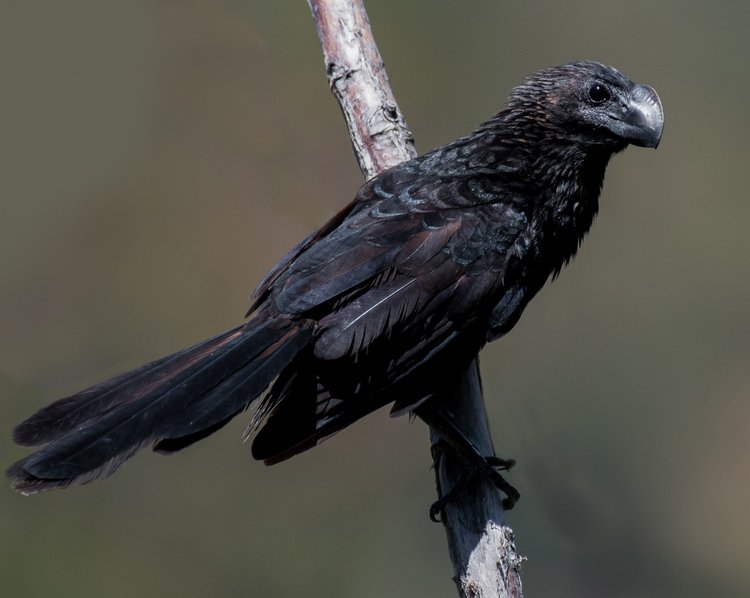
But exploring the island has other rewards. From the underwater snorkel trail in Trunk Bay to the coral reefs off Watermelon Bay, to the petroglyphs and sugar mill ruins off Reef Bay Trail, there is plenty to see and do. The sea views alone are entrancing. In Coral Bay, we finally concede that it’s time for food and begin searching for a restaurant. But instead, near a roadside warehouse, I spot what appears to be a colorful Cattle Egret. We had tried to shoot Cattle Egrets in breeding plumage while visiting St. Croix. Dozens had been huddled in a rookery – but were 100 yards away, and across a body of water. Too far for good photos. But here, with this bird so close, we have a chance.
“Turn around,” I sputter. My husband looks at me with typical mystification. “Cattle egrets!” I exclaim, pointing behind us. He executes a U-turn with the precision of someone who’s done this a few times.
“There! There!” I command, pointing to a dirt lot across the street from where I’d seen the egret. He parks as directed and we both climb out to search for the bird. He’s near a low shrub — an odd spot for this bird. Cattle Egrets are typically found foraging in fields near cattle or other livestock. We creep over, not wanting to spook him. He’s not alone. Two other egrets are nearby. As we move closer, he flies to the roof of a garage. High above us he settles and practically poses. In breeding plumage, a Cattle Egret is a handsome sight. The head, chest, and back turn an impressive golden orange. Appreciatively, we snap off a few photos and bid him goodbye.
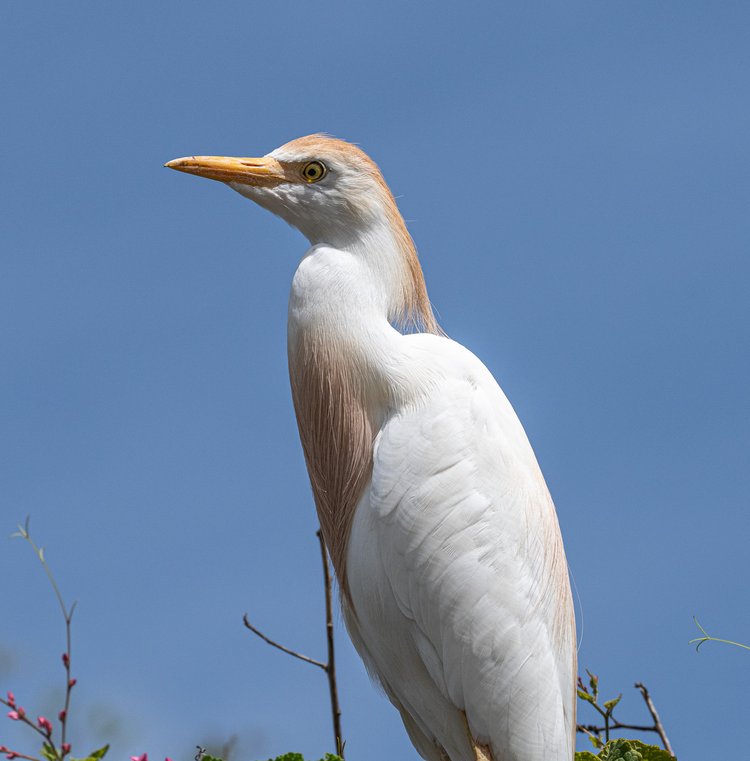
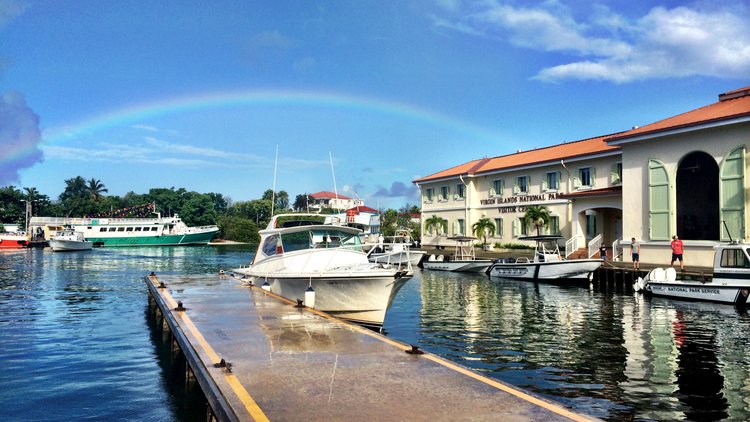
Small Island, Big Challenges
It’s a short walk from the Virgin Islands National Park headquarters in Cruz Bay to The Small Pond at Frank Bay Wildlife & Marine Sanctuary. Park Ranger Laurel Brannick and local writer and environmental lawyer Gail Karlsson are spending time with us today, showing us local birds and their habitats. Brannick has been with the park service since 1992, after moving to the island to work as a lifeguard.
“I came here to vacation, but I moved here for the water and weather,” she says. “As a scuba diver, swim instructor, and lifeguard, I felt I’d found the perfect place.” Three years later she became a park ranger, where she met many people who mentored her.
“I learned about birds from two ladies in their 70s, Thelma and Bea, who were called the ‘bird ladies’,’’ says Brannick. “They’d been park volunteers leading bird walks for 14 years. They’d invite me over for cornbread and tea and tell me their secrets about how to listen for and identify birds by song and calls. They taught me about the various habitats that attract certain birds to come back to the same areas year after year. When they retired from volunteering, they encouraged me to take over the bird walks, and birding became my favorite thing to do.”
Brannick soon became involved in the local Audubon and was the president of the chapter for about a decade. Between her ranger job and Audubon work, she has helped to introduce local birds to many tourists, as well as many of St. John’s local kids. “The park offers kids an opportunity to learn about the wildlife, birds, plants, and island history through programs like SKIP (School Kids in the Park),” says Brannick. “SKIP funds organized outings into the park, and buys binoculars for students to use on field trips. If you want people to appreciate nature, they have to see it.”
Brannick also has helped champion environmental causes to save key natural resources like The Small Pond. The Small Pond is a postage stamp of a pond half a mile southwest of Cruz Bay’s ferry dock. At first glance the brackish water may not seem like much, but it’s quite special in many ways: It’s located near town, bringing biodiversity close in for residents to experience; and it’s one of only a handful of salt ponds on St. John. Salt ponds are one of the most important ecosystems in nature, reducing coastal erosion, filtering pollutants from the water, and nurturing important plants and trees, including mangroves, that serve as rich habitat for marine life and birds. Yet it was not that long ago that Cruz Bay was fighting to preserve The Small Pond.
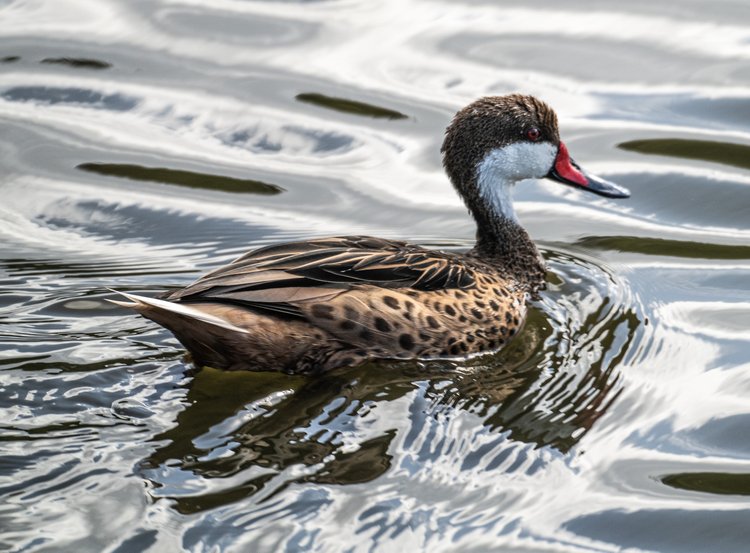
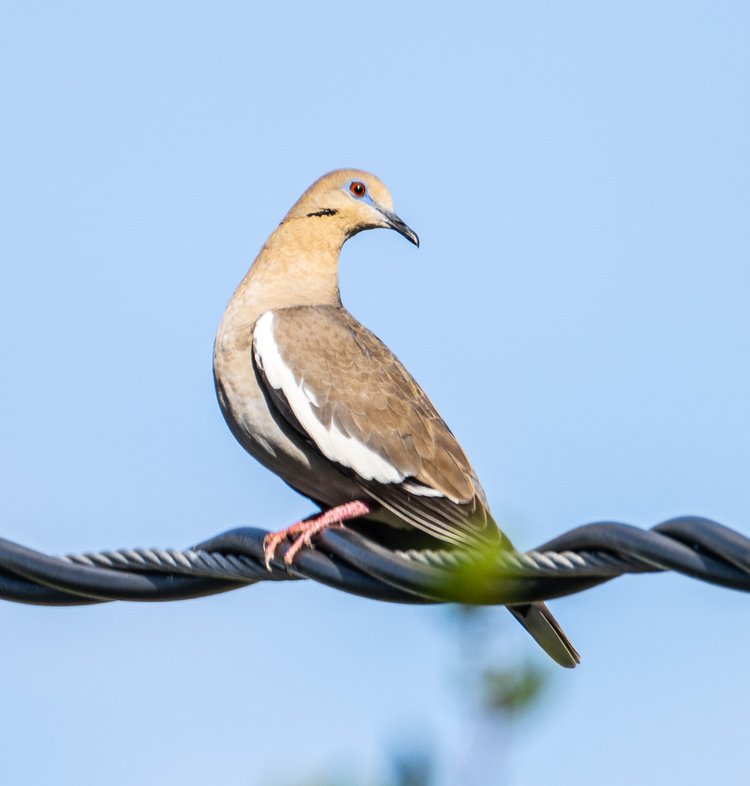
“Salt ponds aren’t beautiful like typical freshwater ponds, so many people don’t understand that they serve a vital role,” says Brannick. “Because The Small Pond was technically outside of the park conservation zone, in 1999 an adjacent property owner decided to develop over the pond. They were crushing the vegetation. They were even shooting the birds!”
Brannick was president of the local Audubon at the time, so she rallied the bird ladies and others to save the pond.
“The bird ladies would stand at the ferry dock every morning to wait for the Commissioner of Fish and Wildlife, who commuted each day by ferry from St. Thomas to St. John,” Brannick says. “They would greet her with questions: What are you going to do about the pond? When are you going to help us? They were the squeaky wheel. We also recruited a wildlife biologist and birder on St. Thomas who helped us make a scientific case for saving the pond. It took a constant effort of pushing, but we succeeded.”
In March 2000, The Small Pond was dedicated as an official bird sanctuary. Since then, the Audubon club and other organizations have continued to improve it, building an observation pier and installing nesting and resting platforms to protect the birds from predatory cats and dogs. Today at the pond, we see the results of that work. Egrets and herons preen on their perches. White-cheeked Pintails and Common Gallinules glide over the smooth pond surface. Black-necked Stilts stand transfixed, hunting for breakfast. All are happily ensconced in the habitat that nurtures them.
The salt ponds are just one of a variety of important island habitats for birds. St. John has moist and dry subtropical forests, grasslands, island cays, and beaches. These habitats serve as stopping off points for hundreds of summer and winter migrants. Neotropical warblers, Bananaquits, and Bridled Quail Doves can be found in the forest trees and along trails. Herons and egrets can be seen by salt ponds and shores. And by boat, birders can spot boobies, terns, White-tailed Tropicbirds, and Magnificent Frigatebirds.
We do our best to hit all the key birding spots: Francis Bay, Reef Bay, Lameshur, Leinster Bay, Brown Bay, and even Brannick’s back yard. At her home, she and Karlsson help us spy Black-faced Grassquits — another lifer for us! And even our hosts are impressed when a Caribbean Elaenia stops by for a visit.
“You never know what you’ll see,” says Brannick with a smile. “Every day is a new adventure on St. John.”
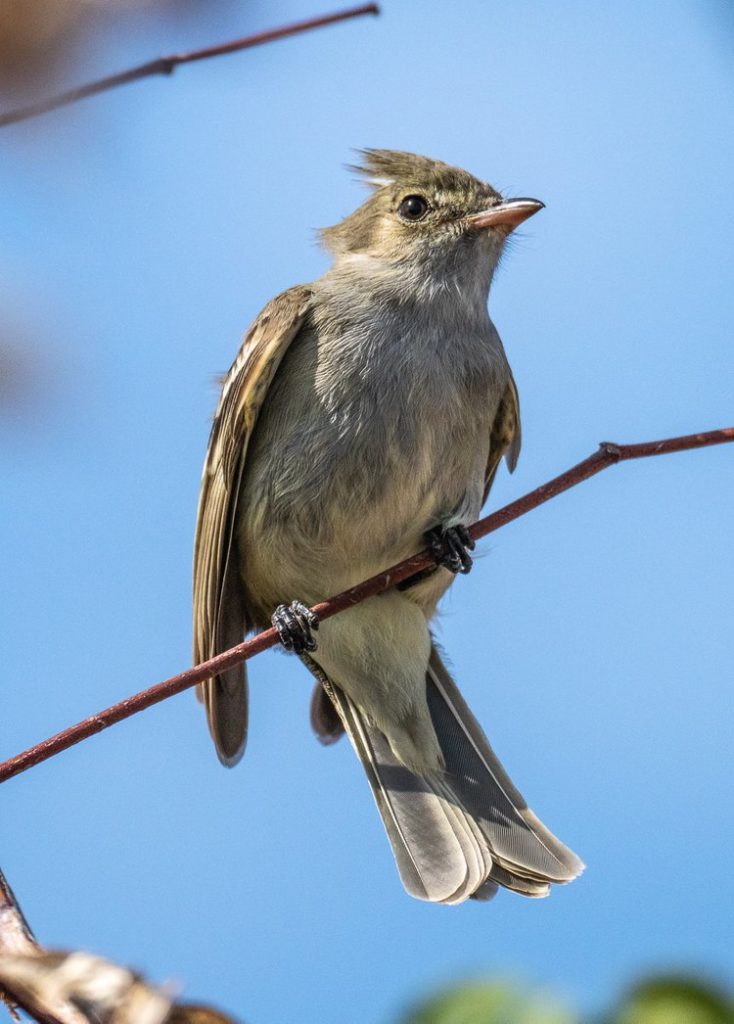
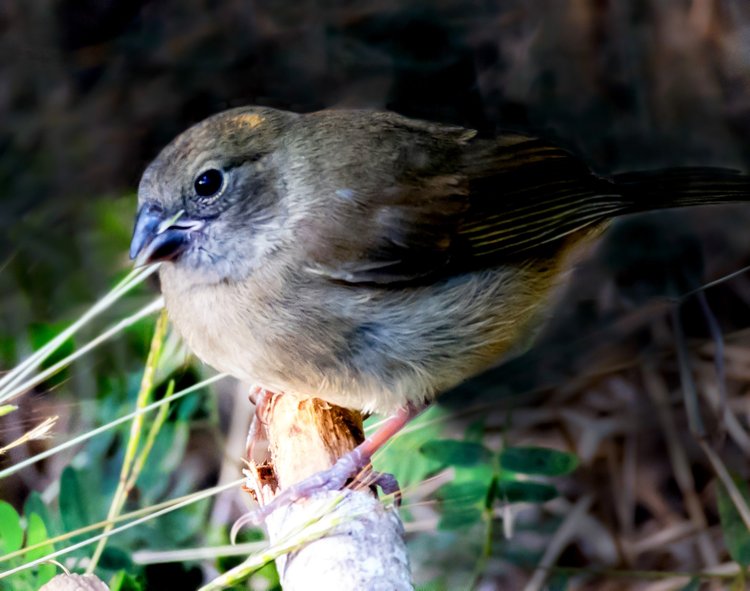
For information about guided tours and other events offered by the Virgin Islands National Park, visit the website.
A St. John ‘Darwin Project’
Environmental attorney and author Gail Karlsson has been a part-time resident of St. John since 1991. In 2003, she was thrilled to purchase property near the water in Fish Bay, which turned out to include a black mangrove pond and wetlands area. As she explored her lot and the nearby conservation land, she began to document the rich ecosystem of the wetlands. She also started sharing photos and information about the many birds, lizards, crabs, insects, plants, and trees she saw there, publishing articles in the local newspapers and on her website.
“I started thinking about doing a nature survey in 2004, when I heard about a ‘Darwin project’ on Anegada in the British Virgin Islands,” Karlsson told me. With funding from the U.K. government’s Darwin Initiative program, local islanders were working with scientists to map the unique plants, animals, fish, birds, and sea turtles at Anegada, providing data to help protect the ecosystem and promote survival of these species. Anegada has a coral reef system and plants of worldwide importance, as well as significant nesting and foraging areas for endangered marine turtles, iguanas, and birds.
The U.K. program referenced Charles Darwin’s famous studies of birds and other creatures in the remote Galapagos Islands. Darwin had noticed slight differences between members of the same species on different islands. His conclusion — that those differences made them more perfectly adapted to their specific environments — was critical in the development of his theory of evolution.
“Fish Bay isn’t nearly as remote and exotic as the Galapagos, or Anegada,” Karlsson admitted, “but it is a well-defined conservation area with a number of distinct habitats that deserve more investigation. There have been scientific studies of the coral along the outer edge of Fish Bay, the sharks breeding in the shallows, and the crayfish that live in the pools in the Fish Bay Gut. But there has been little formal documentation of the wonderful diversity of trees, plants, birds, insects, and other creatures here.”
Karlsson believes that “our lives are enriched by understanding more about the environment around us, and as a result we become increasingly motivated to protect it.”
For visitors like me, who marvel at the the diversity of nature on St. John, I completely concur.

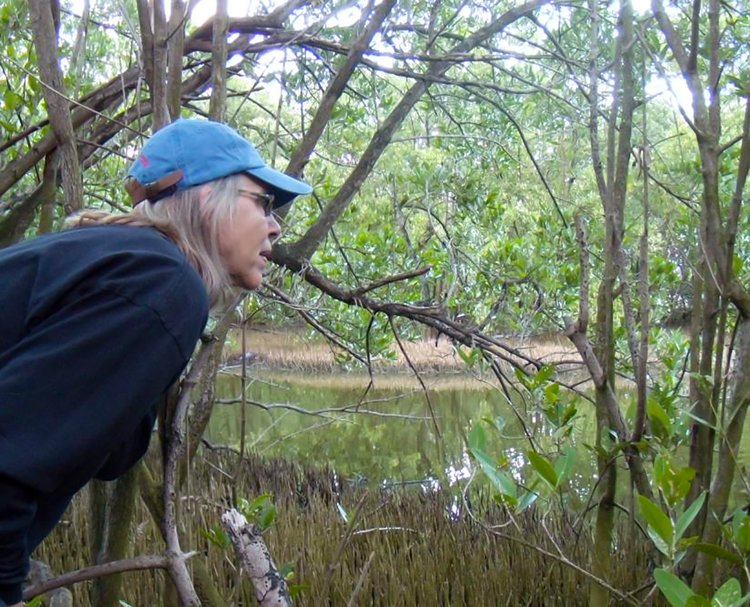
Robbie Lisa Freeman is a public relations professional in Los Angeles and a contributing writer for the Western Tanager Newsletter. Follow her on Instagram @freebird2020LF.





